Notes
- 1 2 Wainwright, Martin (12 January 2008). "'Artful Codger', 84, faces jail for fencing hoax art". The Guardian. Archived on 2 September 2012.
- ↑ "'The Antiques Rogue Show'". The Guardian. 28 January 2008. Archived on 2 September 2012.
The Eadred Reliquary was one of the wide-ranging art forgeries produced by Shaun Greenhalgh and his family, of Bolton, Greater Manchester.
In 1989, Shaun Greenhalgh's father, George, tried to sell to Manchester University a supposed 10th-century Anglo-Saxon silver reliquary, containing a small piece of wood which he claimed was a fragment of the True Cross. [1] He said he had found the vessel while metal detecting in a park in Preston, Lancashire.
Shaun, who had crafted the object, intended it to resemble a known missing Anglo-Saxon piece, dating back to the time of Eadred, the King of England from 946 to 955. The British Museum decided that the reliquary was not genuine, [2] but the Greenhalgh family managed to sell it privately for a modest £100. [1]
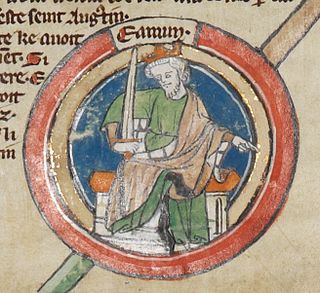
Edmund I or Eadmund I was King of the English from 27 October 939 until his death. He was the elder son of King Edward the Elder and his third wife, Queen Eadgifu, and a grandson of King Alfred the Great. After Edward died in 924, he was succeeded by his eldest son, Edmund's half-brother Æthelstan. Edmund was crowned after Æthelstan died childless in 939. He had two sons, Eadwig and Edgar, by his first wife Ælfgifu, and none by his second wife Æthelflæd. His sons were young children when he was killed in a brawl with an outlaw at Pucklechurch in Gloucestershire, and he was succeeded by his younger brother Eadred, who died in 955 and was followed by Edmund's sons in succession.

Northumbria was an early medieval Anglo-Saxon kingdom in what is now Northern England and south-east Scotland.

Eadwig was King of England from 23 November 955 until his death. He was the elder son of Edmund I and his first wife Ælfgifu, who died in 944. Eadwig and his brother Edgar were young children when their father was killed trying to rescue his seneschal from attack by an outlawed thief on 26 May 946. As Edmund's sons were too young to rule he was succeeded by his brother Eadred, who suffered from ill health and died unmarried in his early 30s.

Edgar was King of the English from 959 until his death. He became king of all England on his brother's death. He was the younger son of King Edmund I and his first wife Ælfgifu. A detailed account of Edgar's reign is not possible, because only a few events were recorded by chroniclers and monastic writers were more interested in recording the activities of the leaders of the church.

Eadred was King of the English from 26 May 946 until his death. He was the younger son of Edward the Elder and his third wife Eadgifu, and a grandson of Alfred the Great. His elder brother, Edmund, was killed trying to protect his seneschal from an attack by a violent thief. Edmund's two sons, Eadwig and Edgar, were then young children, so Eadred became king. He suffered from ill health in the last years of his life and he died at the age of a little over thirty, having never married. He was succeeded successively by his nephews, Eadwig and Edgar.

Michael David Wood, is an English historian and broadcaster. He has presented numerous well-known television documentary series from the late 1970s to the present day. Wood has also written a number of books on English history, including In Search of the Dark Ages, The Domesday Quest, The Story of England, and In Search of Shakespeare. He was appointed Professor of Public History at the University of Manchester in 2013.
Wulfstan was Archbishop of York between 931 and 952. He is often known as Wulfstan I, to separate him from Wulfstan II, Archbishop of York.
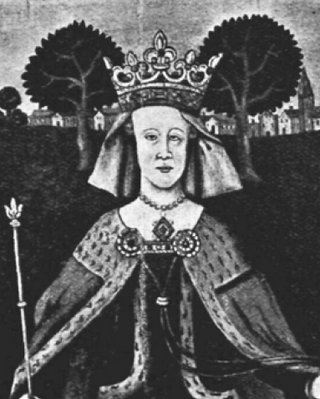
Eadgifu of Kent was the third wife of Edward the Elder, King of Wessex.

Art Fund is an independent membership-based British charity, which raises funds to aid the acquisition of artworks for the nation. It gives grants and acts as a channel for many gifts and bequests, as well as lobbying on behalf of museums and galleries and their users. It relies on members' subscriptions and public donations for funds and does not receive funding from the government or the National Lottery.

Æthelwold of Winchester was Bishop of Winchester from 963 to 984 and one of the leaders of the tenth-century monastic reform movement in Anglo-Saxon England.

The Monymusk Reliquary is an eighth century Scottish house-shape reliquary made of wood and metal characterised by an Insular fusion of Gaelic and Pictish design and Anglo-Saxon metalworking, probably by Ionan monks. It is now in the National Museum of Scotland in Edinburgh.
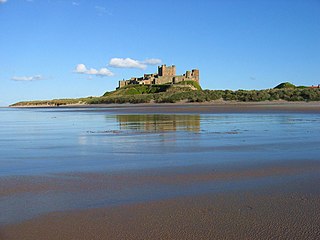
Oswulf was ruler of Bamburgh and subsequently, according to later tradition, commander of all Northumbria under the lordship of King Eadred of England. He is sometimes called "earl" or "high reeve", though the precise title of the rulers of Bamburgh is unclear. By the twelfth century Oswulf was held responsible for the death of Northumbria's last Norse king, Eric of York, subsequently administering the Kingdom of York on behalf of Eadred.
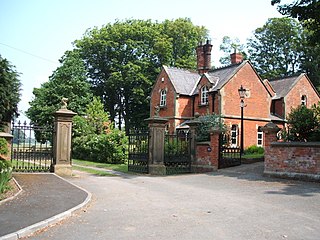
Singleton is a village and civil parish in Lancashire, England. It is situated on the coastal plain called the Fylde. It is located south-east of Poulton-le-Fylde, and at the 2001 census had a population of 877, increasing to 889 at the 2011 Census. The parish is sometimes referred to as two parts – Great Singleton is the larger part containing the village, and Little Singleton is a small area north of the village bordering the River Wyre.
Shaun Greenhalgh is a British artist and former art forger. Over a seventeen-year period, between 1989 and 2006, he produced a large number of forgeries. With the assistance of his brother and elderly parents, who fronted the sales side of the operation, he successfully sold his fakes internationally to museums, auction houses, and private buyers, accruing nearly £1 million.
The Risley Park Lanx is a large Roman silver dish that was discovered in 1729 in Risley Park, Derbyshire, and was later lost from view. In Roman times, a lanx was generally a large serving platter, about 15 by 20 inches in size. Particularly ornamented ones were used to make offerings or sacrifices. The inscription on the Risley Park Lanx suggests it was used as "church plate".

The Amarna Princess, sometimes referred to as the "Bolton Amarna Princess," is a statue forged by British art forger Shaun Greenhalgh and sold by his father George Sr. to Bolton Museum for £440,000 in 2003. Based on the Amarna art-style of ancient Egypt, the purchase of the Amarna Princess was feted as a "coup" by the museum and it remained on display for three years. However, in November 2005, Greenhalgh was brought under suspicion by Scotland Yard's Arts and Antiquities Unit, and the statue was impounded for further examination in March 2006. It is now displayed as a part of an exhibition of fakes and forgeries.
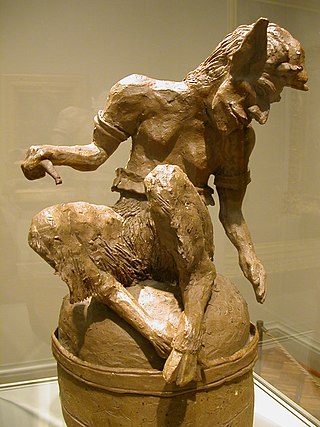
The Faun is a sculpture by British forger Shaun Greenhalgh. He successfully passed it off as a work by Paul Gauguin, selling it at Sotheby's for £20,700 in 1994. Three years later, in 1997, it was bought by the Art Institute of Chicago for an undisclosed sum, thought to be about $125,000. It was hailed by them as "one of its most important acquisitions in the last twenty years."

Viking activity in the British Isles occurred during the Early Middle Ages, the 8th to the 11th centuries CE, when Scandinavians travelled to the British Isles to raid, conquer, settle and trade. They are generally referred to as Vikings, but some scholars debate whether the term Viking represented all Scandinavian settlers or just those who used violence.
Janina Sara Maria Ramirez, sometimes credited as Nina Ramirez, is a British art historian, cultural historian, and TV presenter. She specialises in interpreting symbols and examining works of art within their historical context.

The Uttoxeter Casket, also known as Philip Nelson's casket, is an Anglo Saxon reliquary from Uttoxeter, Staffordshire in the United Kingdom. As of 2017, it is held at the Cleveland Museum of Art in Ohio, United States. House-shaped and carved from a single piece of boxwood, it remains the only known surviving wood carving with such an elaborate iconographic programme from this period of British history.